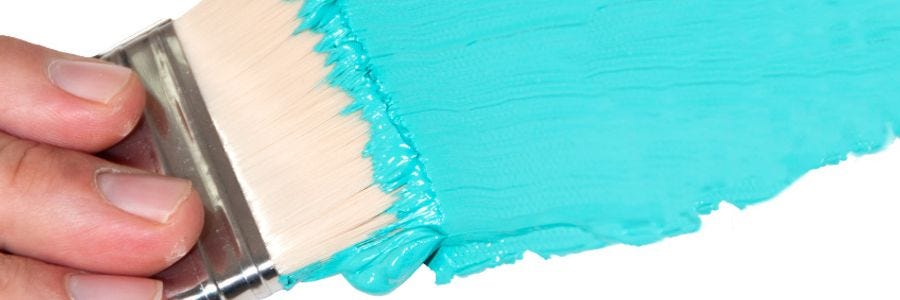Abstract art is a relatively new genre. Without going into historical specifics, one could say it is roughly 100 years old. Regardless of whether you like abstract art or not, it can be really fun to create. You’ll find when you create your own artwork you’ll come to appreciate the genre more. Here are a few hints to follow to achieve professional abstract art results.
Keep it Simple. If you are just starting out, remember to take baby steps. Don’t try to work too large at first – try a medium size canvas such as a 60cm x 90cm and use limited colours. In fact, a good first piece can be black on white. This might not look too exciting, but the compositional lessons you learn will put you in good stead for future projects.
Colour Theory. Colour theory is of the utmost importance. One cannot rely on clever composition or an identifiable element to save a painting. Abstract art makes the viewer ‘feel’ something, and bad colour choices will repel them. If the colours clash, it is noticeable. Get a colour wheel and use it to help you select harmonious colour groupings and companion colours.
Take a Step Back. Get into the habit of continually stepping back from your work and viewing it from a distance so you can critique your progress. Make small adjustments and learn to tweak it until it looks as pleasing to the eye as you think it can be.
Create Interest. Abstract works of art must be visually interesting, not only from a compositional viewpoint, but also down to each coat of paint. Create interest through colour and texture. In most cases it is possible to crop an area anywhere on the painting the size of a postage stamp, creating a centre of interest.
Techniques. Abstract art is exciting because there are no real rules for painting techniques. Any style of paint application is open game. Some of the techniques one can experiment with include paint splatter, glazing, scumbling, dry brushing, blending, sgraffito and impasto.
Mix up the Media. The lack of rules when creating abstract art also applies to mediums. Any medium can be used in conjunction with other mediums, so long as they are compatible with each other. Modelling paste can be used under or over the paint, which impressions can be made into, or various items pressed into the wet paste. Sand can be added to paint for texture and paper collage can also be utilised.
Composition. There are a few guidelines that can be followed for best results. Give the following compositions a go when creating abstract art: Radial Design (everything radiates from the centre), grid on any axis (e.g. horizontal, vertical and diagonal), triangle, or bridge design (something connects one side to the other). The Cruciform (cross shape) and designs based on letters (L, S, Z, H and T are the more common ones) will also deliver eye-catching results.
Stop at the Right Time. Remember the old adage ‘It takes two artists to paint a painting, one to paint it and the other to say when to stop’. Learn to decide when a piece is finished. Many paintings have been spoilt as a result of being overdone.
Remember that abstract art is highly intuitive, and one only learns from practice and refining their methods. Endeavour to ‘find’ your own style and try new things.
View related products.





























